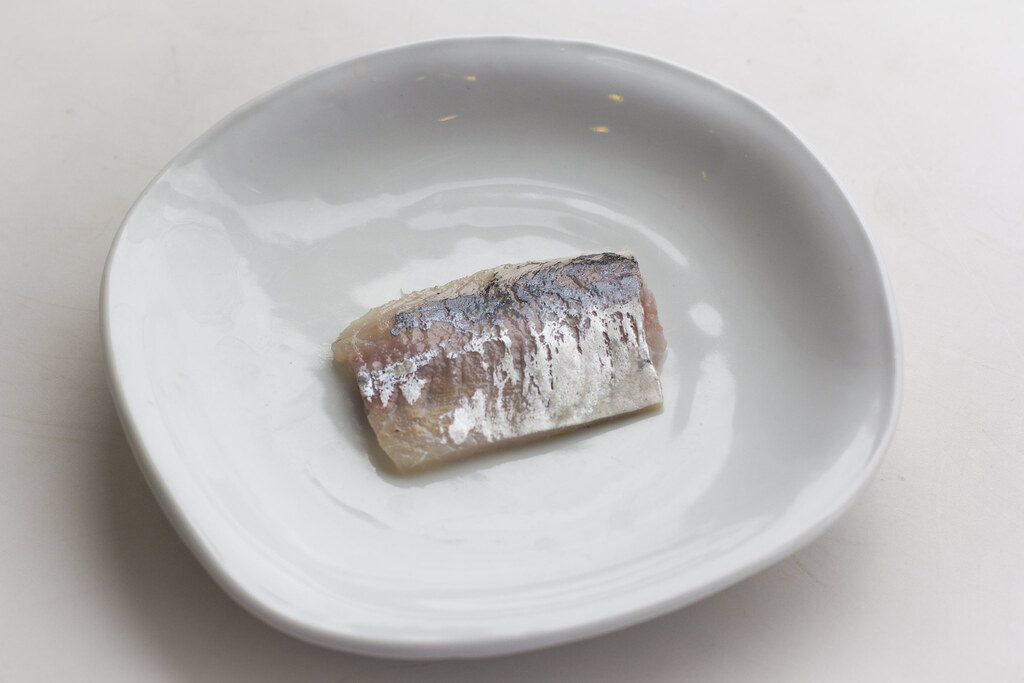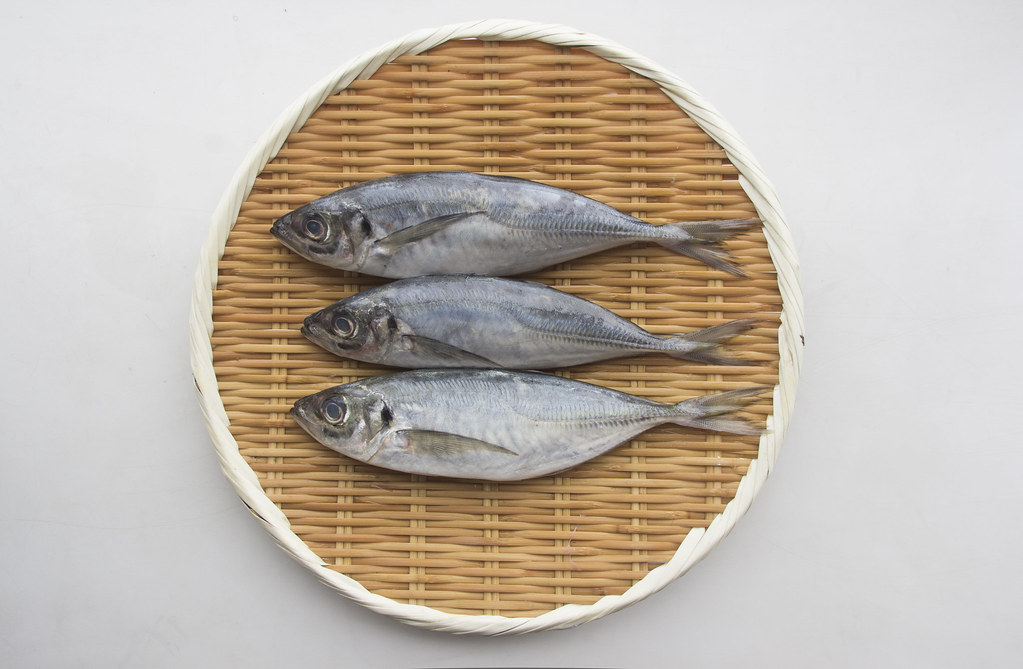
Categorised as a silver skinned fish (Hikarimono/光り物), Aji is extremely similar to sardines (Iwashi) as they are both silver skinned fish that were previously marinated in vinegar due to the inability to keep them fresh in olden times. Nowadays however, they are typically served raw with ginger instead of wasabi.
Known as Trachurus japonicus, Aji is in season from spring to autumn, with the height of the season being in the summer. Just like Shima Aji (thought not the same), Aji also grows a scaly spine like skin near the tail (zengo/ぜんご) that needs to be cut away before filleting the fish. It is also not related to mackerel (Saba) even if it’s name in English is horse mackerel as they are in different families (Scombridae vs Carangidae).
It does however, have an oily and strong taste similar to Saba, which is why it is paired with ginger. The ginger is freshly grated just before being sandwiched between the rice and fish. The ginger is not drained of it’s juiced to prevent the fibres of the ginger from becoming too prominent. Therefore, skill is needed to form the nigiri as to prevent the fish from slipping on the rice due to the excess liquid.
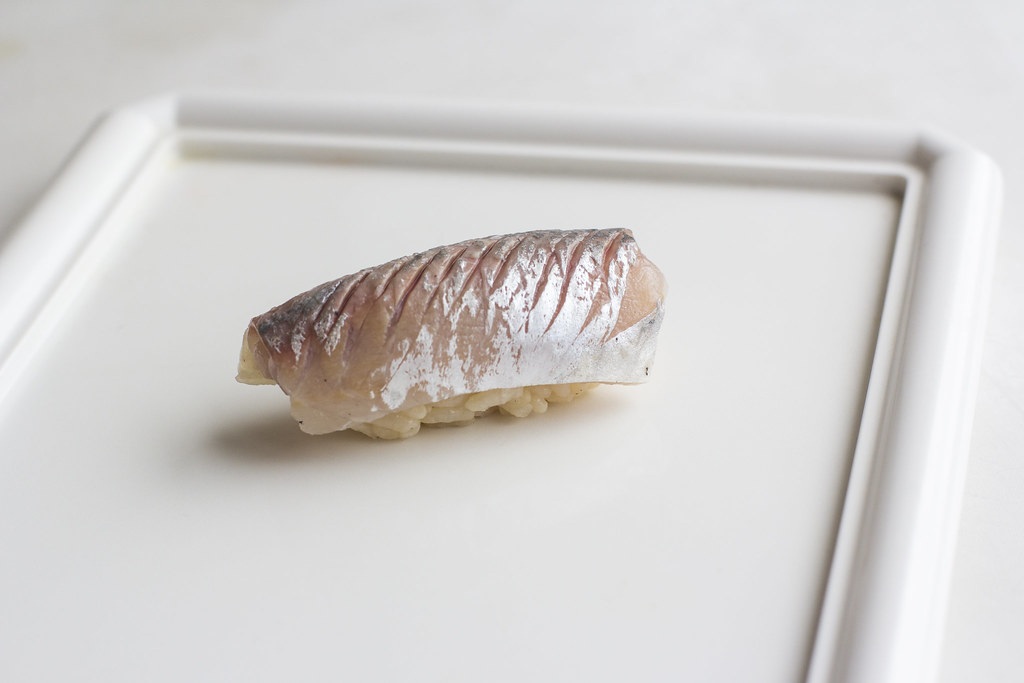
Most Hikarimono such as Iwashi, Saba, Kohada, Kasugo and Aji were all actually marinated for long periods of times to counter the oiliness as well as to hide the inability to keep fish fresh in the old days. Sweet Shrimp Oboro was then used to be added to them, to help mellow out the acidity from the marinade as well as the red sushi vinegar.
Edomae-style preparation of Horse Mackerel:
The preparation method for Aji is slightly different, whereby we butterfly the fish instead of filleting it.
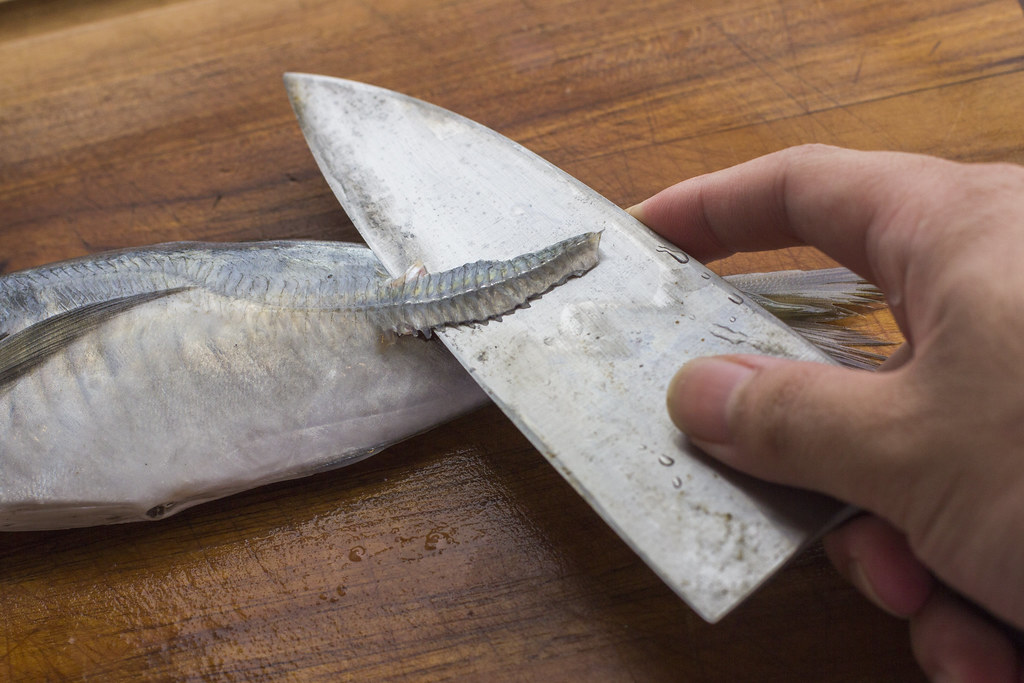
Start by slicing off the scaly spine like skin near the tail (zengo/ぜんご) with a knife.
Using a fish scaler, scale the entire body of the fish.
Slice off the head just behind the pectoral fin.
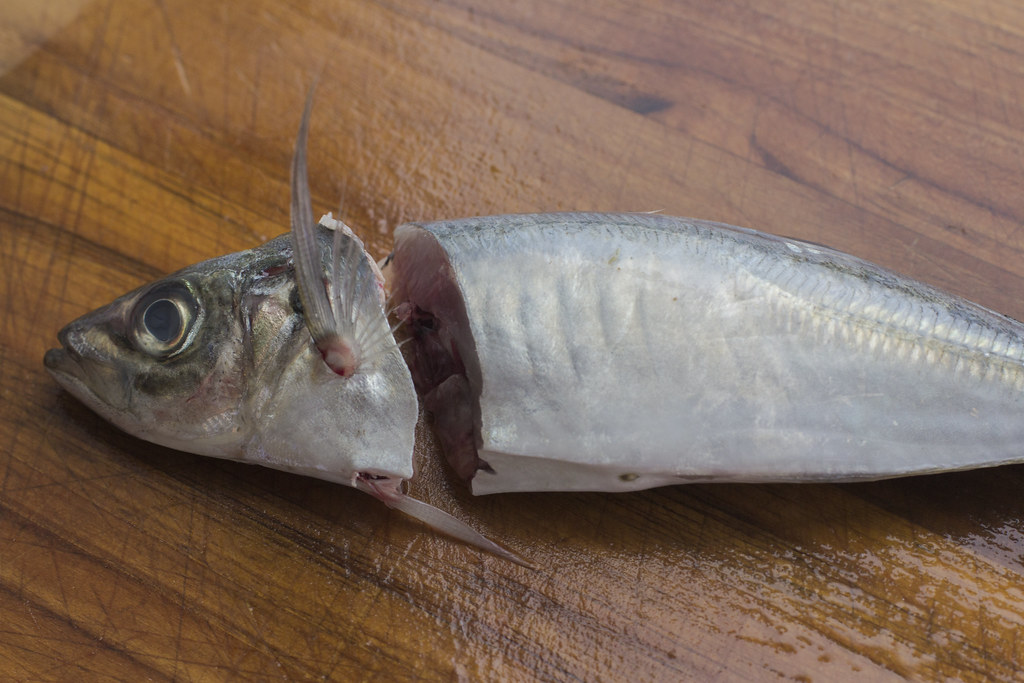
Remove the innards and wash out with water.
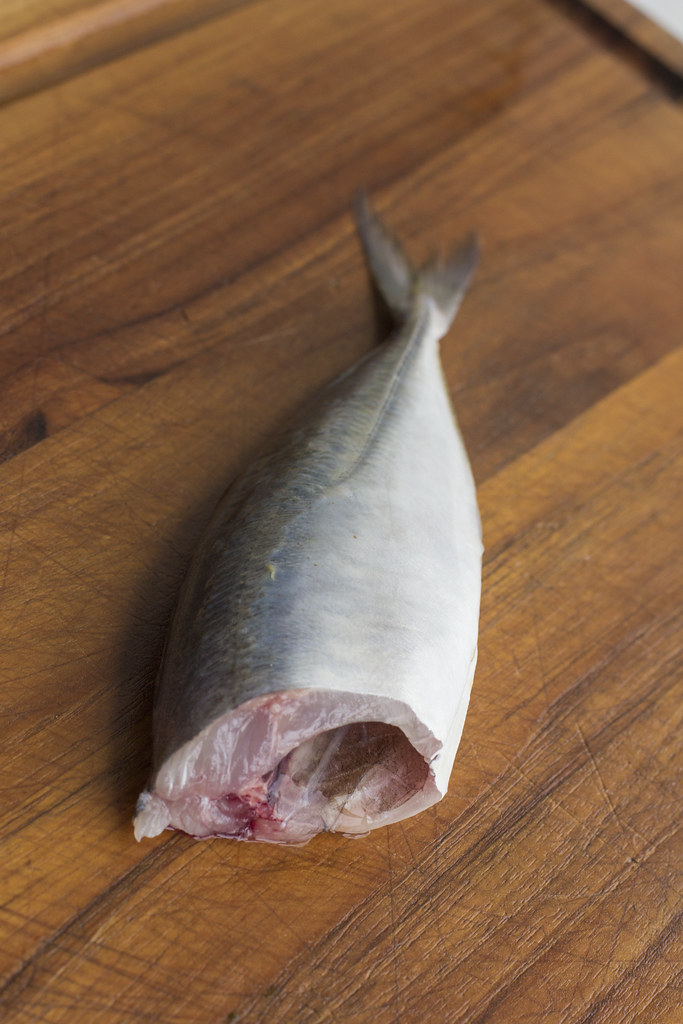
Starting from the back of the fish at the dorsal fin, slice through the flesh in long motions but this time, do not cut through the belly but only though the rib cage.
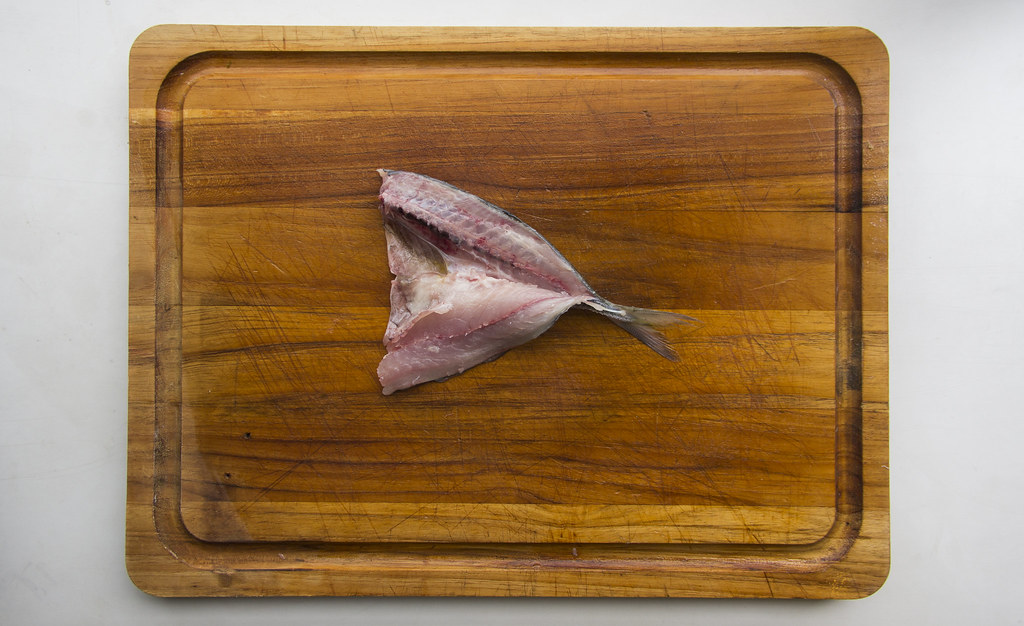
Do that on both sides of the dorsal fin to open up the horse mackerel like a book.
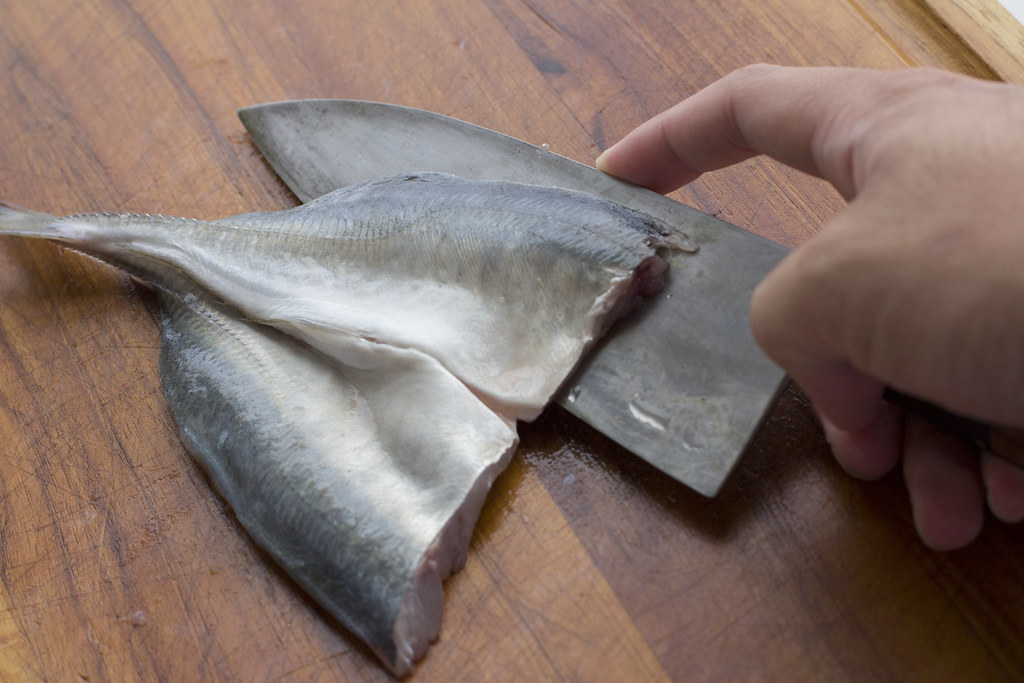
Separate the entire fish from the spine and cut off the spine at the tip of the tail.
Slice off both belly bones at the entire of the butterflied horse mackerel and cut off the tail.
Remove the pin bones from the lateral line on both sides of the fish.
When ready to serve, cut each half of the fish to produce two fillets.
De-skin the fillets and cut into appropriate sizes for nigiri.
Make many small cuts on the flesh to improve the appearance and texture of the fish.
